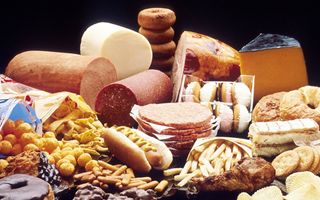(Finance) – 93% of the typical national productions that are consumed originates in Italian municipalities with less than five thousand inhabitants, a heritage of taste and biodiversity that also drives tourism, with 2 out of 3 Italians (65%) among those who will go to vacation who will visit a village in the summer of 2024, according to Ixe’. This is what emerges from the Coldiretti/Symbola study on “Small municipalities and typicality”. The report aims to tell a food and wine heritage of the country kept outside the traditional tourist circuits, enhanced and promoted thanks to law no. 158/17, first signed by Realacci, with measures for the enhancement of small municipalities.
In fact, 93 percent of the Italian food is produced in the territories of the 5,538 small municipalities with a maximum of 5,000 inhabitants, where almost 10 million Italians live. products of protected origin (PDO, Protected Designation of Origin and PGI, Protected Indication of Origin) and 79 percent of the Italian wines most valuable. This report by Coldiretti-Fondazione Symbola “Small Municipalities and Typical Products” gives us an updated picture for each region of this widespread and deep-rooted productive dimension that translates cultural diversity into value.
A virtuous system which represents 70.1% of the 7901 Italian municipalities and in which just over 10 million people live, according to the analysis by the Symbola Foundation and Coldiretti. Piedmont it is the region with the highest number of small municipalities (1,045) followed by Lombardy (1.038) and from Campania (345).
As many as 297 of 321 products with designation of origin (DOP/IGP) Italian products recognized by the European Union have to do with the Small Municipalities which, in detail, guarantee the production of all 54 cheeses with denomination, 98% of the 46 extra virgin olive oils, 90% of the 41 cured meats and meat-based products, 89% of the 111 fruit and vegetables and cereals and 85% of the 13 bakery and pastry products. But thanks to the small centers, 79 percent of the most prized wines are also guaranteed, which represent the Made in Italy in the world. A heritage preserved over time by the 279 thousand agricultural businesses present in small municipalities with a daily commitment to ensure the protection of historical agricultural crops, the protection of the territory from hydrogeological instability and the maintenance of food traditions.
There are 26 products which are produced exclusively in small municipalities: Formai de Mut from the Upper Brembana Valley, Strachitunt, Castelmagno, Robiola from Roccaverano, Puzzone from Moena/Spretz Tzaorì, Pecorino from Picinisco Alto Crotonese, Seggiano, White Beans from Rotonda, Red Aubergine from Rotonda, Chestnut from Vallerano, Cannellino Bean from Atina, Farro from Monteleone di Spoleto, Lemon from Rocca Imperiale, Chestnut from Castel del Rio, Asparagus from Cantello, Pescabivona, Lentil from Castelluccio di Norcia, Maccheroncini from Campofilone, Salami from Varzi, Ham from Carpegna, Jambon de Bosses from Valle d’Aosta, Lard from Arnad/Vallée d’Aoste Lard from Arnad, Ham from Sauris, Salami from S. Angelo, Ham from Norcia.
“The summer holidays are also an opportunity to rediscover our typical products linked to the territories and small municipalities. The Small Municipalities – declares Hermes Realaccipresident of Fondazione Symbola – are an extraordinary opportunity for Italy: a more human-scale economy that focuses on communities and territories, on the intertwining of tradition and innovation, of old and new knowledge, as demonstrated by the report by Fondazione Symbola and Coldiretti. Most of our PDO and PGI products and our finest wines are produced here, along with much of the internationally appreciated Made in Italy. We can compete in a globalized world if we innovate without erasing our identity, if Italy is Italy. Small municipalities can play an important role in the National Recovery and Resilience Plan (PNRR) as long as we look at Italy through the lenses of cohesion, inclusion, green transition, innovation and digital. For this reason, it is even more urgent to fully implement the law, in my name, on the valorization of small municipalities. A law whose value the President of the Republic, Carlo Azeglio Ciampi, had understood when he greeted the campaign “Voler bene all’Italia” stating that “betting on small municipalities, investing in these places by young entrepreneurs, thanks to the development of information technology and new technologies, can become a great adventure to be seized”. Italy can face crises by focusing on its own identity. It can compete and assert itself without losing its soul. Culture, beauty and creativity are the keys with which to bet to maintain and strengthen the international primacy that our country can boast”.
“The small villages have a significant economic, historical, cultural and environmental value in a landscape strongly characterized by agricultural production. They represent – he declares Hector Lunchesnational president of Coldiretti – also a tourist engine that, if adequately valorized, can become a strategic resource for the economic and employment revival of the country. To safeguard this national wealth, it is necessary to create the conditions so that the resident population and economic activities can remain. In the latest ISTAT data on the Italian population, the loss of over 35 thousand residents in the villages in one year was recorded. It is therefore essential to combat depopulation, which also aggravates the situation of isolation of agricultural companies and increases the tendency to dismantle the services, garrisons and security forces present in the territory.”
